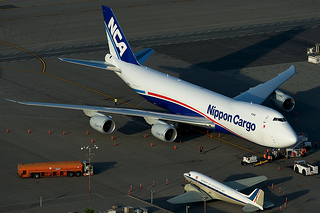 The global aviation industry is expected to earn US$11.7 billion in 2013 on revenues of $708 billion, the growth more the result of a strong passenger market as cargo demand continues to falter.
The global aviation industry is expected to earn US$11.7 billion in 2013 on revenues of $708 billion, the growth more the result of a strong passenger market as cargo demand continues to falter.
In its latest revised forecast, the International Air Transport Association (IATA) downgraded its industry outlook for this year from the June prediction of $12.7 billion after airline performance recorded a slower pace of growth in the second quarter.
The downward revision “reflects the impact on demand of the oil price spike associated with the Syrian crisis and disappointing growth in several key emerging markets,” the association said.
“Profitability continues on an improving trajectory. But we have run into a few speed bumps. Cargo growth has not materialized. Emerging markets have slowed. And the oil price spike has had a dampening effect,” said Tony Tyler, director general and CEO.
“We do see a more optimistic end to the year,” he added. “And 2014 is shaping up to see profit more than double compared to 2012.”
Performance in 2013 is considerably better than the $7.4 billion net profit of 2012. The upward trend should continue into 2014 when airlines are expected to return a net profit of $16.4 billion. This would make 2014 the second strongest year this century after the record breaking $19.2 billion profit in 2010.
But while passenger growth remains robust at 5 percent for 2013, cargo markets remain in the doldrums, noted IATA. Growth of 0.9 percent is expected from the latter for the year, down from the previously projected 1.5 percent.
Cargo yields are expected to fall by 4.9 percent this year, deeper than the 2 percent decline previously projected. Cargo revenues are expected to show an $8 billion decline to $59 billion from their peak in 2011.
On a regional basis, the outlook for Asia-Pacific airlines, the largest players in global cargo markets, is downgraded by $1.5 billion to $3.1 billion, largely driven by slower growth among the region’s emerging economies. But IATA added that this has been somewhat offset by a strengthening domestic market in China and more favorable economic developments in Japan.
North American airlines are expected to post the strongest performance at $4.9 billion profits, up from the previously forecast $4.4 billion.
European airlines are expected to record profits of $1.7 billion, an improvement from the previously expected $1.6 billion.
The outlook for Latin American carriers is unchanged at $600 million in profit, Middle East carriers are expected to post profits of $1.6 billion, and Africa’s carriers will fall into losses of $100 million, down from a previously projected profit of $100 million.
In 2014, airlines are expected to see a significant boost with profits of $16.4 billion on revenues totaling $743 billion, on the back of rising business and consumer confidence levels, falling oil prices, and improving market structures on several regions.
“We expect slightly more robust passenger growth (5.8%) and a significant improvement in cargo growth to 3.7%,” said IATA. “Yields, however, for both passenger and cargo markets are expected to continue to fall by 0.5% and 2.1% respectively.”
For the year, Asia-Pacific is expected to see a modest improvement in profitability to $3.6 billion, largely on the back of improved cargo performance, the growing Chinese domestic market, and the benefits of restructuring in Japan.
North American carriers are forecast to post the strongest performance in 2014 with $6.3 billion in net profit, while European carriers are expected to see a near doubling of profits to $3.1 billion.
Middle East carriers are expected to post a $2.1 billion profit, carriers in Latin America will be seeing profits rise to $1.1 billion, and African airlines are predicted to return a combined profit of $100 million.
The balance between profit and loss remains delicate despite the forecast improvement for 2014, said Tyler. “Even a small change in the operating environment—a new tax or other cost increase, for example—could change the outlook quite significantly.”
Photo: BriYYZ




